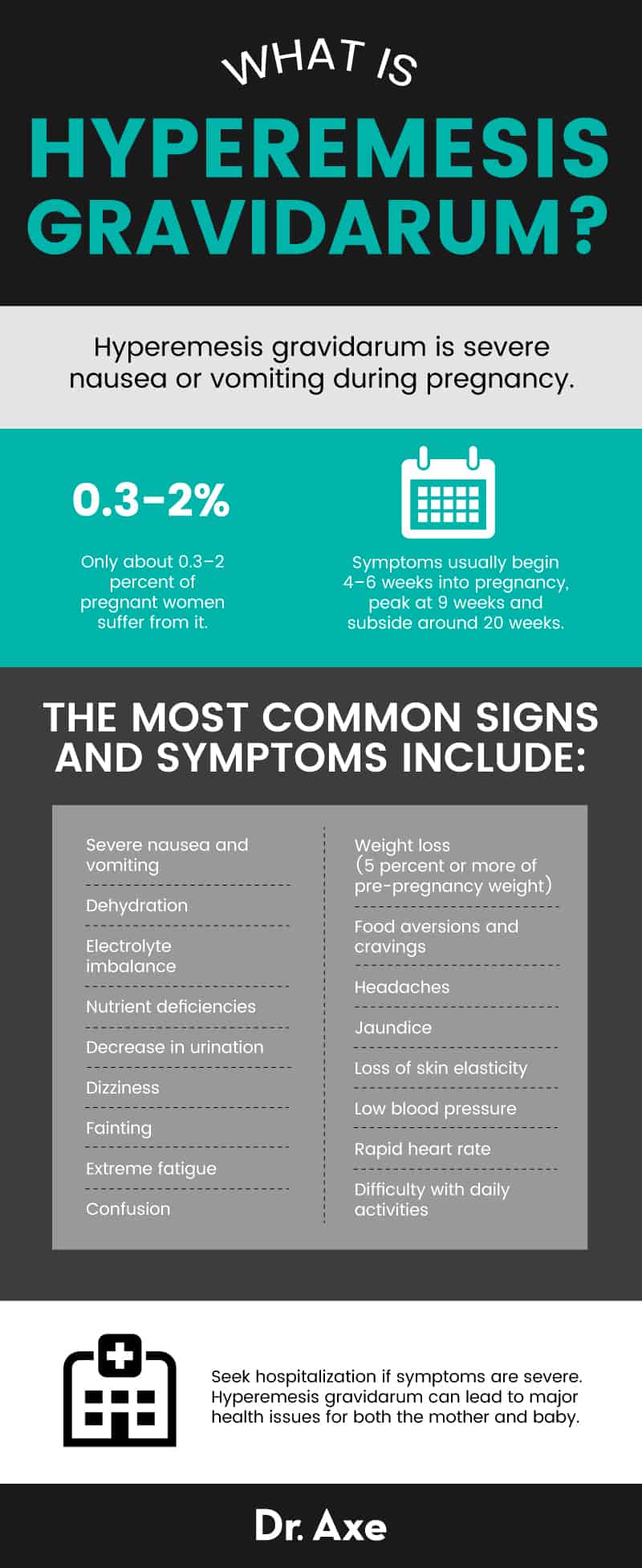This Dr. Axe content is medically reviewed or fact checked to ensure factually accurate information.
With strict editorial sourcing guidelines, we only link to academic research institutions, reputable media sites and, when research is available, medically peer-reviewed studies. Note that the numbers in parentheses (1, 2, etc.) are clickable links to these studies.
The information in our articles is NOT intended to replace a one-on-one relationship with a qualified health care professional and is not intended as medical advice.
This article is based on scientific evidence, written by experts and fact checked by our trained editorial staff. Note that the numbers in parentheses (1, 2, etc.) are clickable links to medically peer-reviewed studies.
Our team includes licensed nutritionists and dietitians, certified health education specialists, as well as certified strength and conditioning specialists, personal trainers and corrective exercise specialists. Our team aims to be not only thorough with its research, but also objective and unbiased.
The information in our articles is NOT intended to replace a one-on-one relationship with a qualified health care professional and is not intended as medical advice.
Hyperemesis Gravidarum: 9 Natural Ways to Manage Symptoms
October 17, 2018

You’ve heard of morning sickness during pregnancy, but what about when nausea and vomiting is so severe that the mother loses over 5 percent of her body weight and suffers from malnutrition? Oh, and unlike morning sickness that tends to last only during the first trimester, this can last 20 weeks into pregnancy, or longer. This is a condition called hyperemesis gravidarum, and for women going through it, being offered a cracker or told that it’s just a mental thing can be extremely insulting and discouraging.
Hyperemesis gravidarum is the most common cause of hospitalization during the first half of pregnancy — and second only to preterm labor as a cause of hospitalization during pregnancy.
It’s a debilitating and relentless condition that greatly impacts a woman and her family. Women with hyperemesis gravidarum have difficulty performing their usual activities and find that this disorder alters their physical, psychological and social functioning. (1)
Many women are left questioning why they have this serious condition, and although the exact cause is unclear, new research is pinpointing some specific links that may help to determine who is at the greatest risk of hyperesmesis gravidarum.
What Is Hyperemesis Gravidarum?
Up to 80 percent of pregnant women experience some form of nausea and vomiting during their pregnancy. While morning sickness generally involves nausea that’s sometimes accompanied by vomiting, and it usually subsides at about 12 weeks of pregnancy or sooner, hyperemesis gravidarum is characterized as nausea that’s accompanied by severe vomiting and does not usually subside until later — or at all during the course of the pregnancy.
Hyperemesis gravidarum also tends to cause severe dehydration, and it doesn’t allow you to keep any food down, so it’s normal to lose 5 percent of your body weight, or more.
Approximately 0.3–2 percent of pregnant women suffer from hyperemesis gravidarum. For some women, hospitalization or spending time away from work is necessary. Some women lose their jobs because of the amount of time they need off when suffering from hyperesmesis, and women with this condition often feel they are under-treated and left feeling stigmatized by the disorder, as people tend to presume that it’s psychological. (2, 3)
Signs and Symptoms
If it’s not managed adequately, hyperemesis gravidarum can lead to major issues like malnutrition, electrolyte imbalance, thrombosis, depressive illness and poor pregnant outcomes.
Symptoms of this condition usually begin 4–6 weeks into pregnancy, peak at 9 weeks and subside by around 20 weeks. However, for less than half of the women with hyperemesis, the symptoms can last the entire pregnancy.
The most common symptom of hyperemesis gravidarum is severe nausea and vomiting. Most women affected by this condition experience numerous episodes of vomiting throughout the day with few (if any) symptom-free periods. This is especially true during the first 3–4 months of pregnancy.

The most common signs and symptoms of hyperemesis gravidarum include: (4)
- Severe nausea and vomiting
- Dehydration
- Electrolyte imbalance
- Nutrient deficiencies
- Decrease in urination
- Dizziness
- Fainting
- Extreme fatigue
- Confusion
- Weight loss (5 percent or more of pre-pregnancy weight)
- Food aversions and cravings
- Headaches
- Jaundice
- Loss of skin elasticity
- Low blood pressure
- Rapid heart rate
- Difficulty with daily activities
Some research shows that hyperemesis gravidarum is associated with an increased risk for adverse pregnancy outcomes, including issues like low birth weight, preterm labor and infants who are small for their gestational age. These issues are usually a threat in more severe cases of hyperemesis, when the mother is losing a lot of weight and suffers from prolonged nausea and vomiting. The risk of these complications also increase if medical intervention is delayed or inadequate.
Hyperemesis gravidarum also increases the risk for placental disorders, such as placental abruption, especially if symptoms continue into the second trimester of pregnancy, and it increases the risk for depression, anxiety and mental health difficulties during pregnancy, and postpartum depression as well.
In addition to these issues during pregnancy, there’s research indicating that after pregnancy, women who suffered from hyperemesis gravidarum are more likely to develop muscle weakness, motion sickness, autoimmune disorder and post-traumatic stress disorder. And infants are more likely to experience colic, irritability and growth restriction. (5)
Hyperemesis Gravidarum Causes and Risk Factors
The cause of hyperemesis gravidarum still isn’t exactly known, but there are numerous theories regarding its etiology. Every year, new findings emerge and continue to prove that hyperemesis is a complex physiological disorder that’s likely caused by many factors.
Recently, researchers made a scientific breakthrough when they used human genetics to determine what influences the risk of this serious condition.
In 2018, a UCLA-led study identified two genes that are associated with hyperemesis gravidarum. These genes, known as GDF15 and IGFBP7, are believed to be involved in the development of the placenta, and they play an important role in early pregnancy and appetite regulation. The two genes are also linked to cachexia, a condition that causes similar symptoms to hyperemesis gravidarum, including weight loss and muscle wasting.
When scientists compared the variations in DNA from pregnant women with no nausea and vomiting to women with hyperemesis gravidarum, they found that the DNA variation around the genes GDF15 and IGFBP7 was associated with the condition. These findings were then confirmed in an independent study that evaluated women with hyperemesis gravidarum. It appears that proteins GDF15 and IGFBP7 are abnormally high in women with severe nausea and vomiting, and researchers are now trying to determine whether these gene protein levels can be altered safely during pregnancy to minimize the symptoms. (6, 7)
Before this recent research, studies on why some pregnant women develop symptoms of hyperemesis never clearly identified a cause. Researchers believed hyperemesis may be caused by the following issues: (8)
- Hormone fluctuations
- Nutritional deficiencies
- Gastrointestinal dysfunction
- Asthma
- Allergies
- Hepatic abnormalities
- Autonomic nervous dysfunction
- H pylori infection
- Psychosomatic causes
According to research published in the International Journal of Women’s Health, hyperemesis gravidarum is associated with many risk factors; pregnant women with this condition are more likely to be younger, pregnant for the first time, a person of color and less likely to drink alcohol.
Data also suggests that female babies are connected to hyperemesis gravidarum, and women whose mothers or sisters also experienced severe nausea and vomiting during pregnancy are at an increased risk of developing hyperemesis gravidarum.
Although recurrence rates are high for women with hyperemesis gravidarum, they are not 100 percent, which may suggest that many factors come into play here and the cause of hyperemesis is not only based on a pregnant woman’s genetics. With more research, especially focusing on the role of gene protein levels in hyperemesis prognosis, we may have a clear answer about the causes of this condition in the near future. (9)
Hyperemesis Gravidarum Diagnosis
A hyperemesis gravidarum diagnosis is usually made by checking for weight loss (with a loss greater than 5 percent of pre-pregnancy body weight indicating hyperemesis), checking for increased ketones, which accumulate in the blood when dehydration or an electrolyte imbalance occur and assessing the overall condition of the pregnant woman.
Some other signs of hyperesmesis that can be tested in a lab include an increase in liver enzymes, abnormal thyroid and parathyroid levels and increased hematocrit, which indicates a contracted blood volume and dehydration. (10)
Conventional Treatment
The management of hyperemesis gravidarum involves correcting an electrolyte imbalance and dehydration, correcting nutritional deficiencies, preventing complications and providing symptomatic relief. Early intervention is critical. Managing or regulating the symptoms will promote a healthy outcome for both the mother and baby.
If a patient is admitted to the hospital for hyperemesis gravidarum, she will typically receive intravenous fluids, and in some cases, may receive tube feeding in order to restore nutrients.
Antiemetics are commonly used to control nausea and vomiting for patients who choose to use low-dose medications when dietary measures have failed and symptoms continue to persist. Some antiemetic agents that are used for hyperemesis include ondansetron, metoclopramide, meclizine and promethazine. Proton pump inhibitors and antihistamines are also sometimes used as an adjunctive treatment. (11)
9 Natural Remedies for Hyperemesis Gravidarum Symptoms
1. Dietary Changes
Adequate nutrition is one of the most challenging issues for women with hyperemesis. Although a pregnant woman needs a variety of nutrients for the health and proper development of her baby, the symptoms of hyperemesis can make it impossible to eat a balanced diet.
According to research published in Obstetrics & Gynecology, “modification of the amount and size of meals consumed throughout the day may help relieve symptoms.” This may be helpful for women who are able to tolerate meals that are made up of certain foods. Instead of eating 2–3 large meals per day, it may help to consume smaller amounts of food and fluids more often. Researchers also suggest eating meals that contain more carbohydrates than fats and acid and meals higher in protein may help to decrease symptoms. On top of this, any foods that trigger nausea should be identified and avoided. (12)
For some women with hyperemesis, the idea of eating any type of food can be nauseating. If this is what you’re dealing with, seek medical treatment before you become dehydrated and malnourished. Early intervention is important for your health and the health of your baby.
2. Reduce Stress and Get Rest
Women who are suffering from hyperemesis symptoms should try their best to reduce stress and get as much rest as possible. With this condition, prolonged fatigue is common and bed rest is often necessary, sometimes for an extended period of time.
Sometimes women with this condition find it helpful to get emotional support from a psychologist to help address the debilitating symptoms. Counseling and support forums can be extremely helpful for women who are feeling hopeless about these seemingly endless symptoms.
To get hyperemesis gravidarum support, you can visit the Hyperemesis Education & Research (HER) Foundation. This very helpful website has support forums, blogs, information and research about this unrelenting condition.

3. Chiropractic Care and Massage Therapy
Chiropractic adjustments and massage therapy may help women who are experiencing pain due to atrophy, musculoskeletal changes and immobility. This type of care can also assist in muscle relaxation and toxin release. (13)
A study conducted in Sweden found that tactile massage serves as a good alternative and complement to traditional treatment or severe nausea and vomiting during pregnancy (SNVP). When ten women with SNVP received tactile massage on three separate occasions while hospitalized for their symptoms, it was said to promote relaxation and give the women an opportunity to regain access to their bodies. (14)
4. Physical Therapy
For women who are bedridden for an extended period of time because of the severity of hyperemesis symptoms, physical therapy can be beneficial. Learning simple exercises to help the mother maintain muscle tone and flexibility can help to lessen the impact of inactivity.
Physical therapy may also help with postural balance, especially those who are affected by hyperemesis and generally have poor postural stability and balance and a high risk of falling compared to pregnant women who do not have this condition. (15)
5. Ginger
Ginger may block the gastrointestinal responses that cause nausea and increase motility of the GI tract. Studies suggest that ginger health benefits may help some women with hyperemesis gravidarum, especially in mild-moderate cases.
In one study, one gram of ginger was administered daily for four days. Preference among the patients to receive ginger versus placebo was significant. However, some studies suggest that taking ginger may actually make hyperemesis symptoms worse. Based on the data, trying ginger for a four-day period will help a woman with this condition to determine whether or not ginger is effective for her symptoms. (16)
If you’d like to start with smaller amounts of ginger to see how you react, try ginger essential oil or ginger tea.
6. Vitamin B6
Studies show that vitamin B6 might be better than placebo in reducing the severity of hyperemesis symptoms, especially at higher doses.
In a review that evaluated five studies including participants taking vitamin B6 for mild to moderate symptoms of hyperemesis, vitamin B6 led to a reduction in symptoms of vomiting and nausea, especially in women with more severe symptoms. Usually, supplementing 25–50 milligrams of vitamin B6 three times daily will help to reduce nausea and vomiting. Before taking high doses of vitamin B6, talk to your healthcare provider about the proper course of action. (17)
7. Thiamine
Research suggests that pregnant women should ingest a total of 1.5 milligrams of thiamine per day, and if they can’t take thiamine orally because of vomiting, it should be taken intravenously. (18)
A condition called Wernicke’s encephalopathy is caused by a thiamine deficiency and can result in serious neurological damage. Hyperemesis is associated with this rare neurological disorder, which is why thiamine supplementation is crucial for women with severe nausea and vomiting during pregnancy. (19)
8. Acupressure and Acupuncture
Although the research on the efficacy of acupressure and acupuncture in the treatment of hyperemesis gravidarum are mixed, there is evidence that this form of therapy is helpful for some women experiencing severe nausea and vomiting during pregnancy.
A study conducted in Croatia evaluated the antiemetic effects of acupuncture and acupressure. The trial included 36 pregnant women with hyperemesis gravidarum. Researchers found that the efficiency of treatment with acupuncture of the point PC6 (above the wrist on the inner forearm) was 90 percent, and treatment with acupressure of the PC6 was 63 percent, compared to the placebo treatment that was 12.5 and 0 percent efficient. (20)
9. Hypnotherapy
Hypnotherapy is a therapeutic tool that guides an individual into a relaxed state, promoting a sense of well-being and calmness.
A scientific review published in the Journal of Obstetrics and Gynaecology analyzed six studies that described hypnosis in the treatment of hyperemesis gravidarum. Researchers found that methodology between the studies differed, but all reported encouraging positive outcomes. (21)
Final Thoughts
- Approximately 0.3–2 percent of pregnant women suffer from hyperemesis gravidarum, a condition that’s characterized by severe nausea and vomiting.
- Hyperemesis gravidarum can be an extremely debilitating condition for pregnant women, often leading to hospitalization. If it’s not managed adequately, it can lead to major health issues for both the mother and baby.
- Symptoms of hyperemesis usually begin 4–6 weeks into pregnancy, peak at 9 weeks and subside by around 20 weeks.
- The cause of hyperemesis gravidarum still isn’t exactly known, but new research suggests that two genes are associated with the condition.
- Dietary and lifestyle changes are the first line of defense for hyperesmesis. When these changes don’t improve symptoms, many patients turn to antiemetics to relieve nausea.
- Natural remedies for hyperemesis gravidarum symptoms include dietary changes, reducing stress and getting rest, chiropractic care and massage therapy, physical therapy, ginger, vitamin B6, thiamine, acupressure and acupunture and hypnotherapy.







